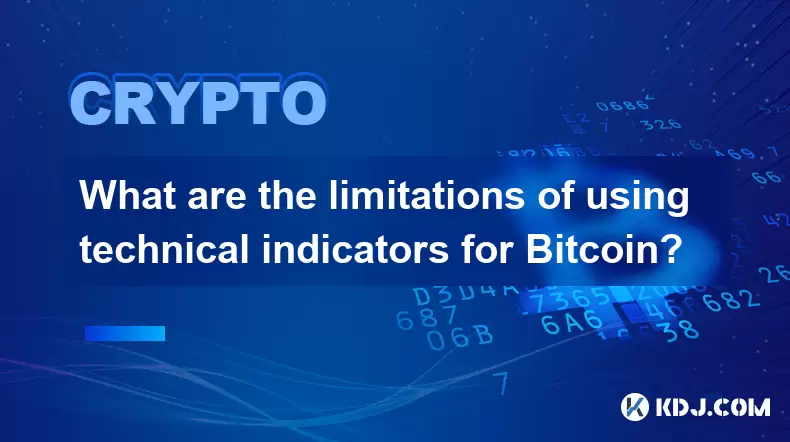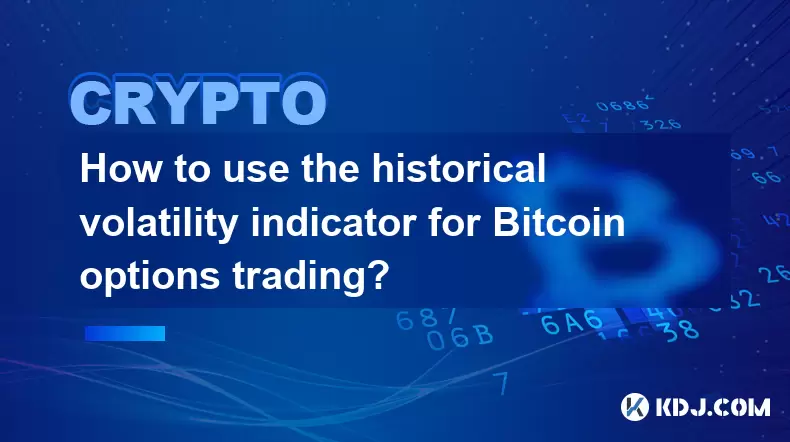-
 Bitcoin
Bitcoin $108,962.3544
0.69% -
 Ethereum
Ethereum $2,563.3189
1.78% -
 Tether USDt
Tether USDt $1.0003
0.00% -
 XRP
XRP $2.2768
2.22% -
 BNB
BNB $661.4562
0.97% -
 Solana
Solana $151.7146
2.47% -
 USDC
USDC $1.0000
0.00% -
 TRON
TRON $0.2847
0.18% -
 Dogecoin
Dogecoin $0.1713
4.43% -
 Cardano
Cardano $0.5848
1.78% -
 Hyperliquid
Hyperliquid $39.5345
-0.06% -
 Sui
Sui $2.9384
1.25% -
 Bitcoin Cash
Bitcoin Cash $492.0864
1.54% -
 Chainlink
Chainlink $13.4271
1.89% -
 UNUS SED LEO
UNUS SED LEO $9.0294
0.07% -
 Avalanche
Avalanche $18.1886
1.61% -
 Stellar
Stellar $0.2430
2.48% -
 Toncoin
Toncoin $2.9054
6.05% -
 Shiba Inu
Shiba Inu $0.0...01186
3.57% -
 Litecoin
Litecoin $88.0187
1.46% -
 Hedera
Hedera $0.1574
1.38% -
 Monero
Monero $315.1335
0.11% -
 Polkadot
Polkadot $3.3994
1.47% -
 Dai
Dai $1.0000
0.00% -
 Ethena USDe
Ethena USDe $1.0002
0.01% -
 Bitget Token
Bitget Token $4.4220
0.86% -
 Uniswap
Uniswap $7.4330
7.03% -
 Pepe
Pepe $0.0...01010
4.10% -
 Aave
Aave $277.8377
2.41% -
 Pi
Pi $0.4572
-0.22%
What is the best exchange to trade Bitcoin?
When selecting a Bitcoin exchange, prioritize security, liquidity, user experience, and regulatory compliance to ensure safe and efficient trading.
Jul 06, 2025 at 02:08 pm

Understanding the Criteria for Evaluating Bitcoin Exchanges
When choosing the best exchange to trade Bitcoin, users must consider several critical factors that define a platform’s reliability and performance. Security remains the most important aspect—exchanges with robust encryption, cold storage options, and two-factor authentication (2FA) are preferred. Liquidity also plays a major role, as higher trading volume ensures faster execution of orders without significant slippage.
Another key criterion is user interface and experience, especially for beginners who may find complex platforms overwhelming. Fee structures, including maker/taker fees, withdrawal charges, and deposit methods, should be transparent and competitive. Additionally, regulatory compliance is crucial, particularly in jurisdictions where crypto regulations are evolving rapidly.
Exchanges that operate under financial licenses or have partnerships with traditional banks often offer added trust.
Top Global Exchanges for Bitcoin Trading
Several exchanges dominate the global market due to their features and user base. Binance stands out for its vast array of trading pairs, low fees, and advanced tools like margin trading and staking. It supports multiple fiat currencies and offers a mobile app with real-time trading capabilities.
Coinbase Exchange is known for its user-friendly interface and strong regulatory standing in the United States. It provides educational resources, making it ideal for newcomers. However, its fee structure tends to be higher than some competitors.
Kraken is another trusted name in the industry, offering high security, advanced charting tools, and support for institutional traders. It has been operational since 2011 and maintains a solid reputation in North America.
Huobi and KuCoin are popular among international traders due to their extensive altcoin offerings and customizable trading interfaces.
How to Register and Start Trading on a Bitcoin Exchange
To begin trading Bitcoin, users need to create an account on the chosen platform. The first step involves visiting the official website and clicking on the "Sign Up" button. A valid email address and strong password are required during registration.
After completing the initial sign-up, users must go through identity verification (KYC). This process typically includes uploading a government-issued ID, such as a passport or driver’s license, and sometimes a selfie holding the document.
Once verified, users can proceed to deposit funds into their account. Most exchanges allow deposits via bank transfer, credit/debit card, or cryptocurrency wallets. Each method comes with different processing times and fees.
- Select the deposit option under the wallet section.
- Choose the currency you wish to deposit (e.g., USD or BTC).
- Follow the instructions provided by the exchange to complete the transaction.
After funds are available, users can navigate to the trading dashboard, select the Bitcoin pair (e.g., BTC/USD), and place a buy or sell order based on current market data.
Security Features to Look for in a Bitcoin Exchange
Given the increasing number of cyberattacks targeting digital assets, selecting an exchange with strong security protocols is essential. Two-factor authentication (2FA) should be mandatory for all accounts, adding an extra layer beyond passwords.
Many reputable exchanges implement cold storage solutions, keeping the majority of user funds offline to protect against hacking attempts. Some platforms also offer insurance policies to cover losses in case of breaches.
Withdrawal whitelisting allows users to specify approved addresses, preventing unauthorized transfers. In addition, multi-signature wallets require more than one key to authorize transactions, enhancing fund protection.
Users should also look for exchanges that publish regular transparency reports and undergo third-party security audits.
Comparing Fees and Transaction Costs Across Platforms
Trading fees vary significantly between exchanges and can impact overall profitability. Most platforms use a maker-taker model, where makers (those placing limit orders) pay lower fees than takers (those executing market orders).
For example, Binance offers tiered fee structures based on BNB holdings and trading volume, starting at 0.1% for takers. Coinbase applies fixed fees depending on the transaction size and payment method used.
Withdrawal fees differ across exchanges and are usually calculated based on network congestion and blockchain confirmation requirements. Users should review each platform’s fee schedule before initiating any transaction.
- Check the fee breakdown for deposits, trades, and withdrawals.
- Compare maker/taker rates if you plan to engage in frequent trading.
- Evaluate hidden costs such as spread margins or conversion fees when trading fiat to crypto.
Frequently Asked Questions
Q: Can I trade Bitcoin anonymously on any exchange?
A few platforms allow limited anonymous trading without full KYC verification, but these often come with restrictions on withdrawal amounts and trading limits. Examples include LocalBitcoins and Bisq. However, most major exchanges require identity verification for enhanced security and regulatory compliance.
Q: Are there any country-specific restrictions for Bitcoin exchanges?
Yes, many exchanges restrict access based on geographic location due to local laws and regulations. For instance, U.S.-based users may not have access to certain Asian exchanges, while Chinese residents face limitations after government crackdowns on crypto trading.
Q: How do I report Bitcoin trading taxes on exchanges?
Most exchanges provide transaction history and tax reports that users can download and submit to tax authorities. Some platforms integrate with tax software like CoinTracking or CryptoTax to automate the process. Users should consult a tax professional familiar with cryptocurrency regulations in their jurisdiction.
Q: What should I do if my exchange account gets hacked?
Immediately contact customer support and request account recovery assistance. Enable 2FA if not already active, change passwords across all associated accounts, and monitor for suspicious activity. If funds were stolen, file a report with local law enforcement and relevant cybercrime units.
Disclaimer:info@kdj.com
The information provided is not trading advice. kdj.com does not assume any responsibility for any investments made based on the information provided in this article. Cryptocurrencies are highly volatile and it is highly recommended that you invest with caution after thorough research!
If you believe that the content used on this website infringes your copyright, please contact us immediately (info@kdj.com) and we will delete it promptly.
- Litecoin Breakout Watch: What Traders Need to Know Now
- 2025-07-06 16:50:13
- Bitcoin, Solana, Ethereum: Decoding the Latest Buzz on the Blockchain
- 2025-07-06 16:50:13
- Widnes Resident's 50p Could Be Your Ticket to Easy Street: Rare Coin Mania!
- 2025-07-06 16:55:13
- Bitcoin, Solaris Presale, and Token Rewards: What's the Buzz?
- 2025-07-06 16:55:13
- Ethereum Under Pressure: Price Drop Amid Global Uncertainties
- 2025-07-06 17:00:13
- XRP, SEC Case, and Prosperity: A New Era for XRP Holders?
- 2025-07-06 17:10:13
Related knowledge

What is the Woodies CCI indicator and can it be used for Bitcoin?
Jul 04,2025 at 05:14pm
Understanding the Woodies CCI IndicatorThe Woodies CCI indicator is a variation of the traditional Commodity Channel Index (CCI), which was originally developed by Donald Lambert. The standard CCI measures the current price level relative to an average price over a given period, typically 14. However, the Woodies version modifies this calculation to mak...

How to use indicators to trade the opening range breakout for Bitcoin CME futures?
Jul 05,2025 at 07:35pm
What Is the Opening Range Breakout Strategy?The opening range breakout (ORB) strategy is a popular trading technique used in both traditional markets and cryptocurrency futures, particularly for Bitcoin on the CME. This method involves identifying a specific price range formed during the early phase of a trading session and then taking positions when th...

What does a bearish cross on the Stochastic RSI mean for Bitcoin?
Jul 05,2025 at 07:18pm
Understanding the Stochastic RSI IndicatorThe Stochastic RSI (Relative Strength Index) is a momentum oscillator used in technical analysis to identify overbought or oversold conditions in an asset's price. It combines two well-known indicators — the RSI and the Stochastic Oscillator — to provide more nuanced signals than either could alone. The Stochast...

What are the limitations of using technical indicators for Bitcoin?
Jul 06,2025 at 03:35am
Understanding the Role of Technical Indicators in Cryptocurrency TradingIn the realm of Bitcoin trading, technical indicators are tools used by traders to analyze historical price data and volume to predict future price movements. These indicators—such as Moving Averages, Relative Strength Index (RSI), and MACD—are widely adopted across traditional fina...

How to use the historical volatility indicator for Bitcoin options trading?
Jul 06,2025 at 04:14am
Understanding the Historical Volatility IndicatorThe historical volatility indicator (HV) is a statistical measure used to assess the price fluctuations of an asset over a specific time period. In the context of Bitcoin options trading, this metric helps traders evaluate past price movements to anticipate potential future swings. Unlike implied volatili...

Best indicator for confirming chart patterns like head and shoulders on Bitcoin
Jul 06,2025 at 01:07pm
Understanding Chart Patterns in Cryptocurrency TradingIn the volatile world of Bitcoin trading, chart patterns serve as critical tools for identifying potential price movements. Among these, the head and shoulders pattern is one of the most reliable reversal indicators. Recognizing this formation requires not only visual identification but also confirma...

What is the Woodies CCI indicator and can it be used for Bitcoin?
Jul 04,2025 at 05:14pm
Understanding the Woodies CCI IndicatorThe Woodies CCI indicator is a variation of the traditional Commodity Channel Index (CCI), which was originally developed by Donald Lambert. The standard CCI measures the current price level relative to an average price over a given period, typically 14. However, the Woodies version modifies this calculation to mak...

How to use indicators to trade the opening range breakout for Bitcoin CME futures?
Jul 05,2025 at 07:35pm
What Is the Opening Range Breakout Strategy?The opening range breakout (ORB) strategy is a popular trading technique used in both traditional markets and cryptocurrency futures, particularly for Bitcoin on the CME. This method involves identifying a specific price range formed during the early phase of a trading session and then taking positions when th...

What does a bearish cross on the Stochastic RSI mean for Bitcoin?
Jul 05,2025 at 07:18pm
Understanding the Stochastic RSI IndicatorThe Stochastic RSI (Relative Strength Index) is a momentum oscillator used in technical analysis to identify overbought or oversold conditions in an asset's price. It combines two well-known indicators — the RSI and the Stochastic Oscillator — to provide more nuanced signals than either could alone. The Stochast...

What are the limitations of using technical indicators for Bitcoin?
Jul 06,2025 at 03:35am
Understanding the Role of Technical Indicators in Cryptocurrency TradingIn the realm of Bitcoin trading, technical indicators are tools used by traders to analyze historical price data and volume to predict future price movements. These indicators—such as Moving Averages, Relative Strength Index (RSI), and MACD—are widely adopted across traditional fina...

How to use the historical volatility indicator for Bitcoin options trading?
Jul 06,2025 at 04:14am
Understanding the Historical Volatility IndicatorThe historical volatility indicator (HV) is a statistical measure used to assess the price fluctuations of an asset over a specific time period. In the context of Bitcoin options trading, this metric helps traders evaluate past price movements to anticipate potential future swings. Unlike implied volatili...

Best indicator for confirming chart patterns like head and shoulders on Bitcoin
Jul 06,2025 at 01:07pm
Understanding Chart Patterns in Cryptocurrency TradingIn the volatile world of Bitcoin trading, chart patterns serve as critical tools for identifying potential price movements. Among these, the head and shoulders pattern is one of the most reliable reversal indicators. Recognizing this formation requires not only visual identification but also confirma...
See all articles

























































































